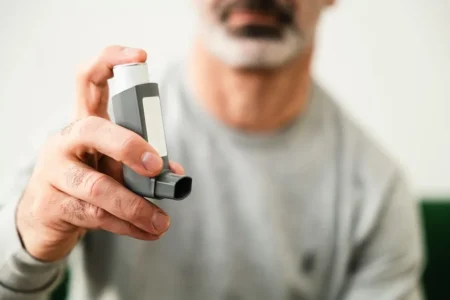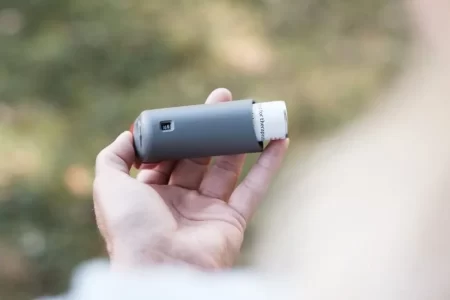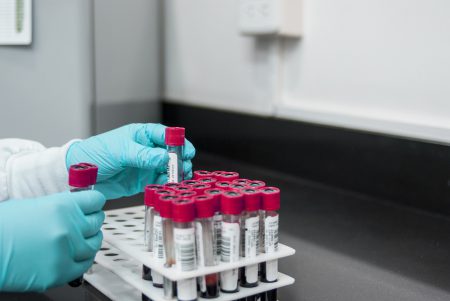Can asthma be cured?
Asthma is a long-term disease and unfortunately it has no cure. Treatment of asthma mainly focuses on how to control the disease. Good asthma control will:
- manage and control troublesome symptoms, such as coughing and shortness of breath.
- manage the need for quick-relief medicines.
- maintain good lung function.
- help to maintain the normal activities of life.
- help to achieve an undisturbed sleep through the night.
- prevent sudden asthma attacks.
What is the treatment for Asthma?
Before prescribing medicines to the asthma patient, the doctor considers certain things such as:
- Which asthma medicine works best for the patient?
- How well the medicine works?
- What is the correct dose of the medicine for the patient?
Asthma medicines can be taken in pill form, but mostly a device called asthma inhaler is suggested by the doctor. An inhaler allows the medicine to go directly to the lungs.
Long-Term Control Medicines
Most people affected by asthma need to take long-term control medicines daily to prevent the symptoms. The long-term medicines reduce airway inflammation, preventing symptoms from starting. These medicines are not meant for quick relief.
Some of the long-term control medicines are:
Inhaled corticosteroids
Inhaled corticosteroids are the medications for long-term relief. They help to reduce the inflammation and swelling that makes the airways sensitive to certain inhaled substances.
Reducing inflammation helps to prevent the chain reaction that causes asthma symptoms. These medicines can be taken daily for many years without the fear of habit-forming.
The side effect of inhaled corticosteroids is a mouth infection called thrush. To avoid this infection, holding chamber is used on the inhaler. Using them prevent the medicine from landing in the mouth or on the back of the throat directly. Another way to lower the risk of thrush is to rinse mouth with water every time after taking inhaled corticosteroids.
Cromolyn
A device nebulizer is used to take this medicine. As the person breathes in, the nebulizer sends a mist of medicine to his lungs. This medicine is used to prevent airway inflammation.
Omalizumab
This medicine is given by injection once or twice a month. It helps the body to stop reacting to asthma triggers. These are generally used if other asthma medicines have not worked well.
A side effect of omalizumab is a life-threatening allergic reaction called anaphylaxis. It might occur when the Omalizumab injection is given. The patient, therefore, should be well aware of the symptoms of anaphylaxis and the actions to be taken in case the reaction develops.
Inhaled long-acting beta2-agonists
These medicines are given to open the airways. Inhaled long-acting beta2-agonists if prescribed for long-term asthma control are always added to inhaled corticosteroids to improve asthma control.
Leukotriene modifiers
These medicines are given to reduce the inflammation in the airways. They are taken by mouth. They block the chain reaction that increases inflammation in the airways.
Theophylline
This medicine helps to open the airways. It is taken by mouth.
Quick-Relief Medicines
Quick-relief medicines provide instant relief to the patient as they help relieve asthma symptoms that may flare-up. Some quick-relief medicines are:
Inhaled short-acting beta2-agonists
These medicines act quickly to relax tight muscles around the airways whenever a flare-up is noticed. This helps airways to open up so air can flow through them. These medicines are taken by the inhaler. Quick-relief medicines are taken at the first sight of asthma symptoms.
If asthma doesn’t stay under control even after taking medicines, the doctor may need to increase the dose of the medicine. On the other hand, if your asthma is well controlled for several months, the doctor may decrease the medicine dosage. These adjustments help the patient to maintain the best control possible with the least amount of medicine necessary.
Immunotherapy
Immunotherapy is the treatment of the disease to restore the defense ability of the immune system to fight against the disease. There are two types of immunotherapy done to treat asthma: allergy shots and sublingual (under the tongue) tablets.
Allergy shots
Allergy shots are effective in relieving symptoms of asthma. It is done if the asthma is triggered by an allergy. This treatment option builds up immunity to the offending allergens which include pollens, dust mite and pets. It can take several years to build up the immunity.
The treatment is done by injecting small amounts of the allergens in the patient’s body and then gradually increasing the doses. These shots of allergens build up a tolerance to the effects of these allergens making the symptoms to reduce gradually and to disappear eventually.
Sublingual tablets
In 2014, Food and Drug Administration approved this type of immunotherapy. In this treatment, the patient is given a tablet daily to dissolve it under the tongue. This treatment starts several months before the allergy season and is continued for several years. The treatment is restricted to only a few allergens but it looks like there is a good scope for this therapy in future.
Emergency Care
Asthma symptoms can be easily managed by following the asthma action plan. But sometimes the patient might need urgent medical attention. The patient might need to call the doctor if:
- Medicines don’t relieve an asthma attack
- Peak flow is less than half of the personal best peak flow number
- The person is having trouble walking and talking because of being out of breath
- The lips and fingernails are blue in color






